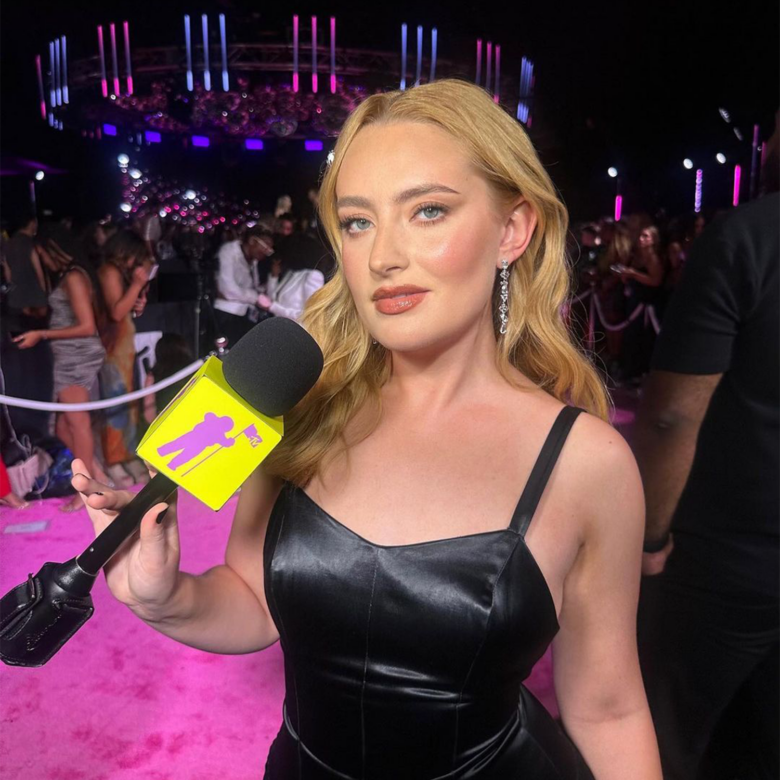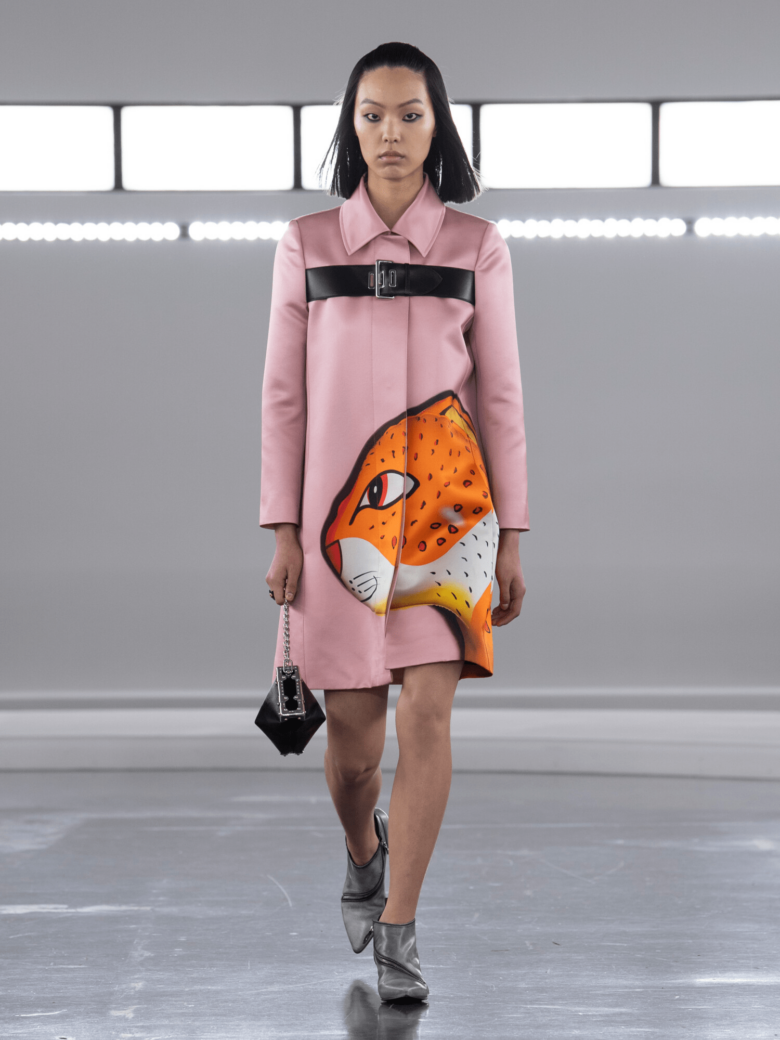Amanda Rowan
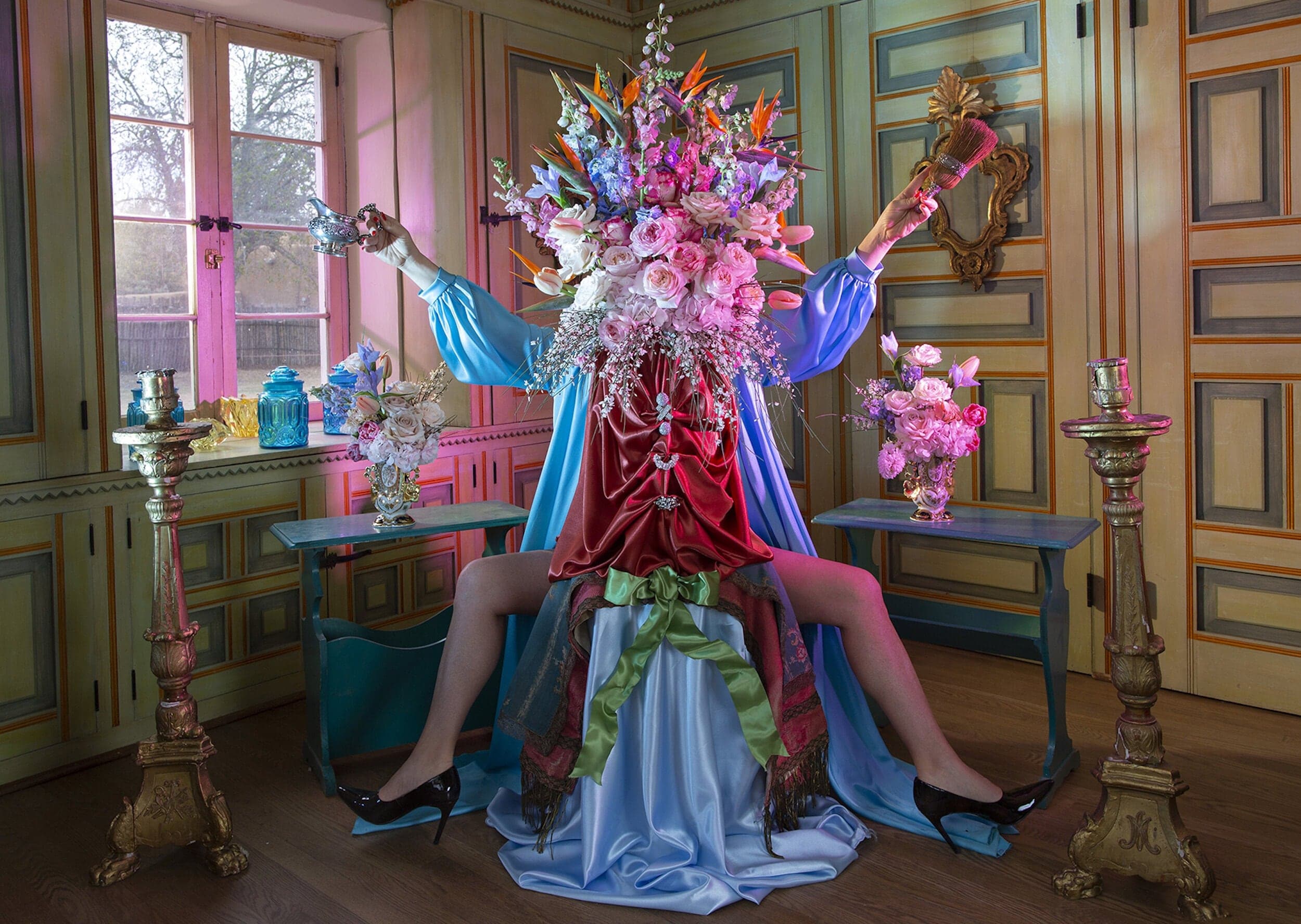
When you type the name “Amanda Rowan” into the search bar, Google Images yields a treasure trove of fabulous, seemingly unconnected images. Paparazzi shots of a woman smirking on the red carpet are displayed alongside hyper-stylised still lifes that are bursting with colour and luscious fruits. Looking at Rowan’s body of work, digitally indexed and displayed, it seems like the photographer, artist and filmmaker, who has also appeared on the large and small screen as well as Broadway, has lived many lives – and that’s without taking into account the portrait portfolio tucked away on her website, featuring celebrities such as Rufus Wainwright.
“Performance has always been a part of my practice,” Rowan says, offering up the common thread uniting her diverse work behind and in front of the camera. Indeed, it’s impossible to miss the theatrical influence in the images she makes today: whether it be spotlights, plush curtains plucked from Broadway or her taut, tableau-inspired compositions. But, less literally, her work mulls over ideas of gender performance, satirising the representation of the female body throughout art history and the media.
In self-portraits, for example, the artist assumes a variety of improbable postures – arms and legs askew – in homage to the contrived female poses that, painted by pin-up artists like Alberto Vargas, proved beguiling to the heterosexual male populace in the 1950s. Her stance on male predecessors such as Vargas is not one of simplistic condemnation, however. With a glint in her eye, Rowan explores the ways that women knowingly slip into the character of the feminine ideal, striving for access to the currency of beauty, youth and sexuality in a patriarchal world, within a never-ending dance between submission and power.
These self-portraits, in which the normally self-possessed artist transforms into a whimsical doll-girl, are haunted by a sense of the uncanny, one that is also present in her intricate still lifes. Stretching stereotypically feminine aesthetics to the extreme with colour-saturated visuals and decadent sets, these images’ focal points revolve around a shifting epicentre of bursting floral arrangements, icing-laden cakes or sculpture-like jelly. Through these pieces, Rowan elevates the domestic sphere with a baroque extravagance, celebrating the artistry to be found in traditionally gendered labour such as cooking and flower arranging that, in the real world, is all too readily dismissed and invisibilised.
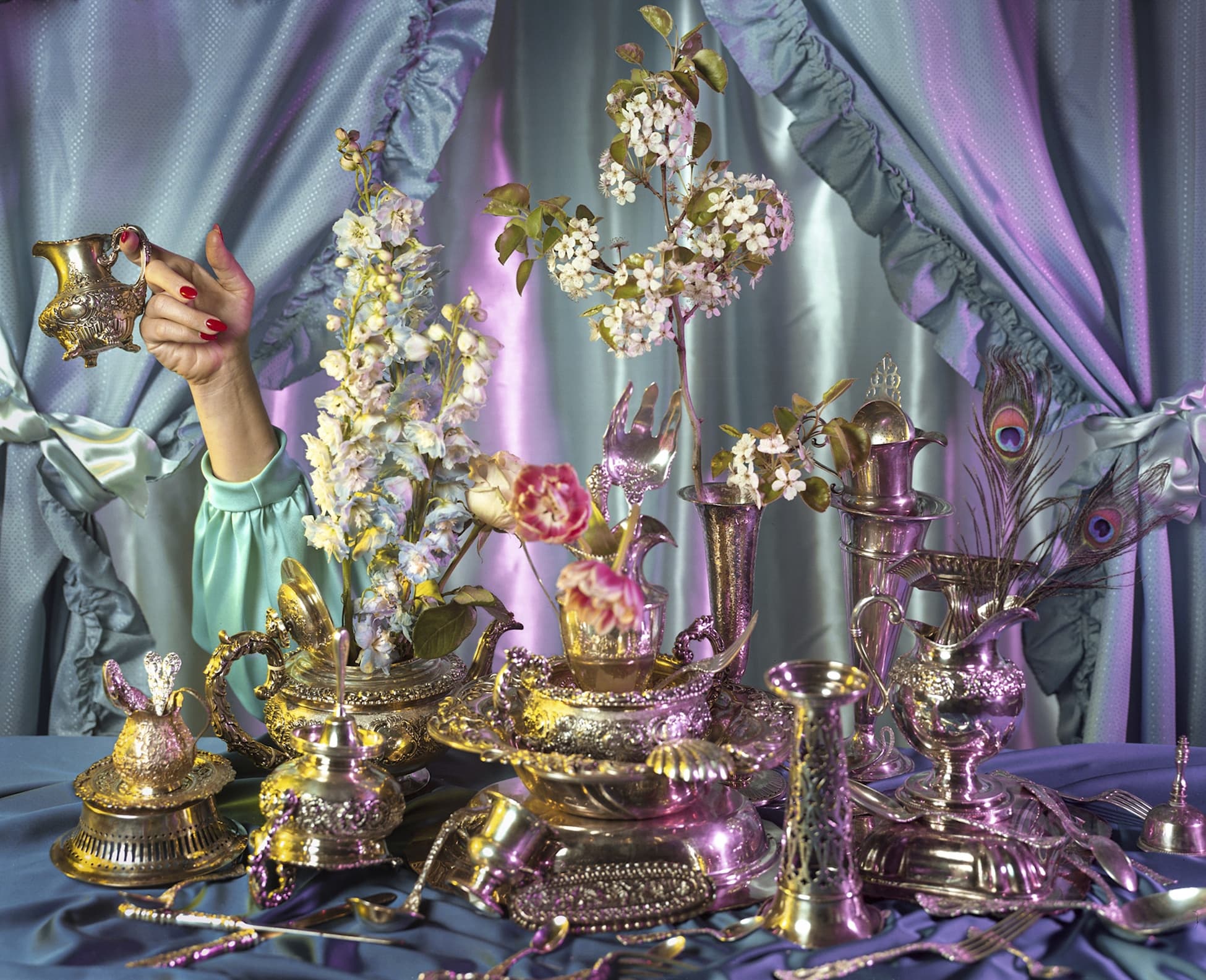
Megan Wallace: I know your entry into the art world was less than conventional. What are the artistic fields you’ve explored and how have they led to your current practice?
Amanda Rowan: When I was in my twenties, I was on Broadway and acted in different movies and television. [Acting] was really inspiring but I reached a certain place in my late twenties where I felt like I didn’t have much autonomy as a creative person. This was pre- MeToo, and the roles I was cast in were pretty ditzy, hyper-sexualised and stereotypical, so I stepped back from that. Throughout my time as an actor, I was also a photographer, but the work I was making was purely for money – photographing for magazines or photographing other actresses and celebrities. I really enjoyed it because I’m so visual, but I had this epiphany where I thought, “Fuck it, I don’t need to make photography that looks like this or be an actress who does that.” The past decade has been me making work that navigates the spaces of being a woman and being an artist and using my body to express my agency, but also [exploring] different ways that womanhood is portrayed in the media. I just allowed myself to get more conceptual about it, and that is a huge gift.
MW: It’s interesting that you mention your background on Broadway. A lot of your pieces have quite a staged and theatrical feel, even when there are no bodies within the frame.
AR: I’ve always been really interested in the device of the tableau in theatrical history, the frozen moment with the actors or set at the beginning or end of a scene, and I think of a lot of my images as tableaux. They’re a beginning or finale of a bigger story, so a lot of my staging comes from asking, “What is the climactic moment, energetically?” That’s also why I use curtains and a lot of hard light and spotlights – my lighting greatly represents stage lighting.
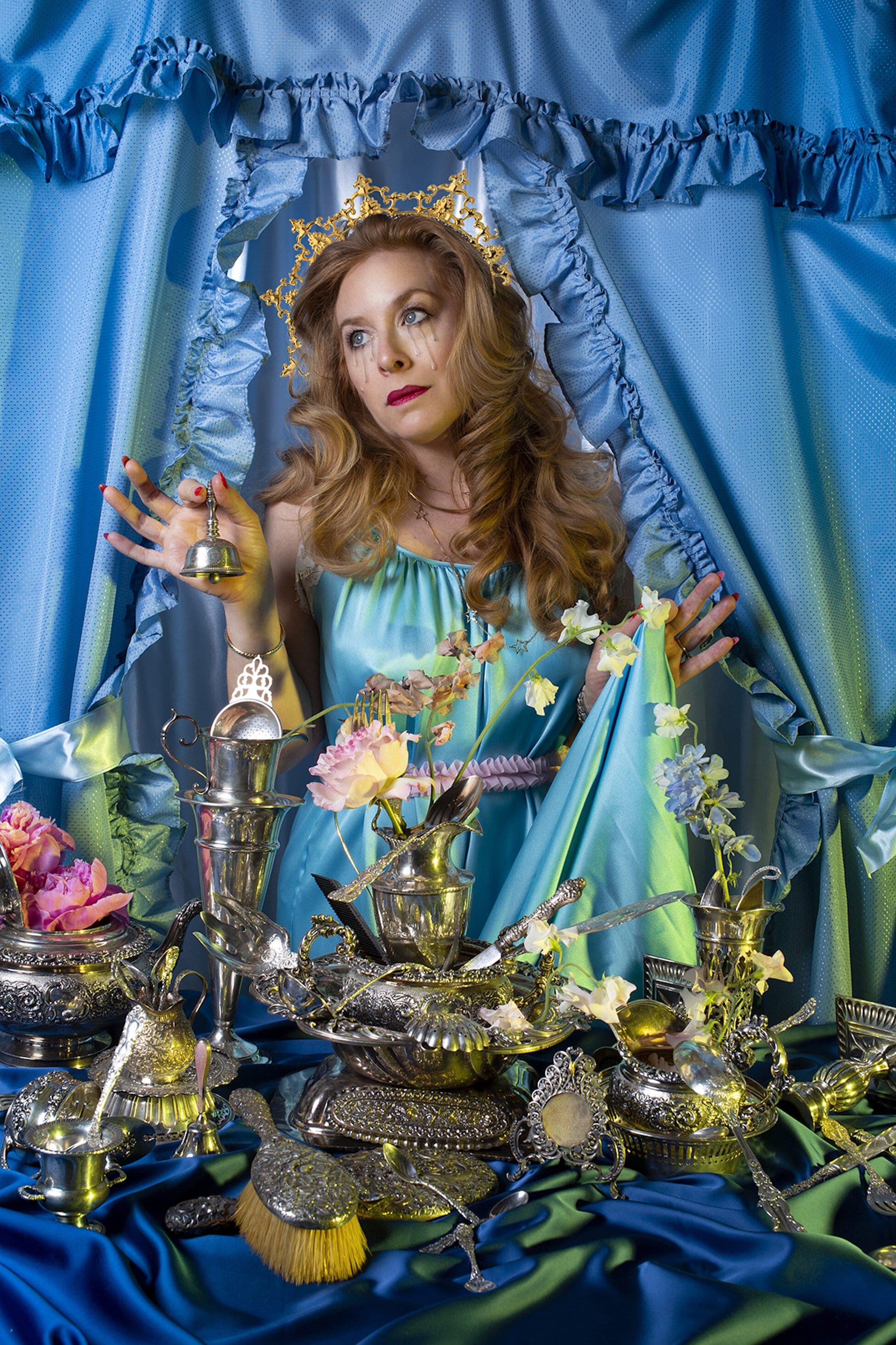
MW: I’d also like to discuss the influence of the 1960s and 1970s in your work. I’m wondering what that era means to you and why it’s a particular source of fascination. Are you drawn to that specific moment within the feminist movement, perhaps?
AR: [My interest] stems from my grandmother on my mother’s side who, just as I was beginning to move toward my own personal expression in photography, passed away. She was a really cool collector of things and was a buyer at Saks Fifth Avenue. She was a totally self-made woman in the 60s and 70s and, when she passed away, she left me this collection of clothing and objects from that period and really random and precious things. It got me thinking about women at that time and specifically her. She was a daughter of an immigrant family in New York and really made her bones by being a passionate, aesthetic woman. She worked her whole life just to be independent and the retro thing is a bit of a collaboration with her, since I have the gift of this collection.
Since then, my aesthetic has been to seek, collect and forage for other weird things that will fit within this world. I’m just drawn to this world in-between worlds – I don’t like when photography looks like a time period. Also, when I think about power for women in my pictures and try to evoke elements of power, I use a couple of different tropes. Some are very much in the world of BDSM, whips or handcuffs, and literal manifestations of power through sex. But there’s also this idea of power through acts of domestic labour, the making of a flower arrangement or the setting of a table. [It represents] an access to historical power and powerlessness in that. Those are moments I find the most in a retro world.
MW: Touching on these ideas of domesticity, I’m quite interested in the presentation of food within your work – these elaborate cakes and jellies or bountiful mounds of fruit.
AR: I’m just really drawn to the act of cooking and food – it’s inherently artful, playful and silly. I just really geek out on food and think it’s a fabulous genre. And when I think about acts of subtle rebellion and what people can control in a life without control, it’s around food. A lot of moments that I depict are these subtle rebellions with food, whether it’s messing up the icing on a cake or texturally smooshing it with your hand. It’s an utterly powerless move of total power.
MW: Something that really strikes me is the sense of kitsch, excess and flamboyance that I see in your work. I was wondering where you consider your work fits in relation to ideas of “taste” and other, potentially constraining, aesthetic norms.
AR: I admire people who have a minimalistic aesthetic – I don’t. I do think there’s a limiting snobbery around minimalism, where it should be all white and understated. By playing with baroque or maximalist elements like gold, fabric, texture and colour, I’m definitely pushing against that. It comes naturally to me.

MW: There’s humour in your pieces, too, which feels like a way of involving the viewer. To you, does the sparkle in the eye tie into ideas of accessibility?
AR: Photography is a whole story in one moment, which is something I really like. While I work in series sometimes, I want each image to stand on its own as a beginning, middle and end in this frozen world. I think humour is a great way to do that, and in the same way that I make what I enjoy and I like this maximalist, textured space, I love humour and the ridiculousness of it all. If you can look at a picture that’s beautiful and evocative and it’s also funny, I think that opens up the space to more people.
MW: As a final question, I’m interested in how you depict the female body in your work. There’s a very specific approach to capturing movement or the experience of inhabiting a woman’s body – it’s almost doll-like.
AR: When I was coming of age, I discovered this painter from the 1950s called [Alberto] Vargas. He painted these very cute, beautiful and sexy pin-ups that were calendars. [The women depicted] are often doing something ridiculous, like they’re in a little dress while fishing and they’re leaning over to catch the fish, so their skirt is flying up and you see their underwear. Their bodies were always so gesturally and specifically sexualised in a way that they didn’t seem aware of. I remember a conflict within myself, I was maybe 14 or 15, of, “Wow, I want to be her. I want to be idolised like that and desired like that,” but also, “This is ridiculous, doesn’t she realise her skirt is flying up? Who fishes like that?” For me as a woman, there’s a constant conflict of wanting to have power through being desired. As I get older, that’s even more fascinating to consider. But also how absurd is it that you have to objectify yourself or demean yourself to play within that [system of power]. That dichotomy is what interests me and the physical gestures [in my work] are about how clichéd or trope-y I can make my legs or hands and the self awareness of being able to control that.
The series “Blue Blood,” was created by Amanda Rowan during her fellowship at the Women’s International Study Center in 2021 and will be featured in a solo show at ACEQUIA MADRE HOUSE Museum in Santa Fe, NM in May 2022.
This story is taken from our Taking Back Control issue. Order your copy here.
